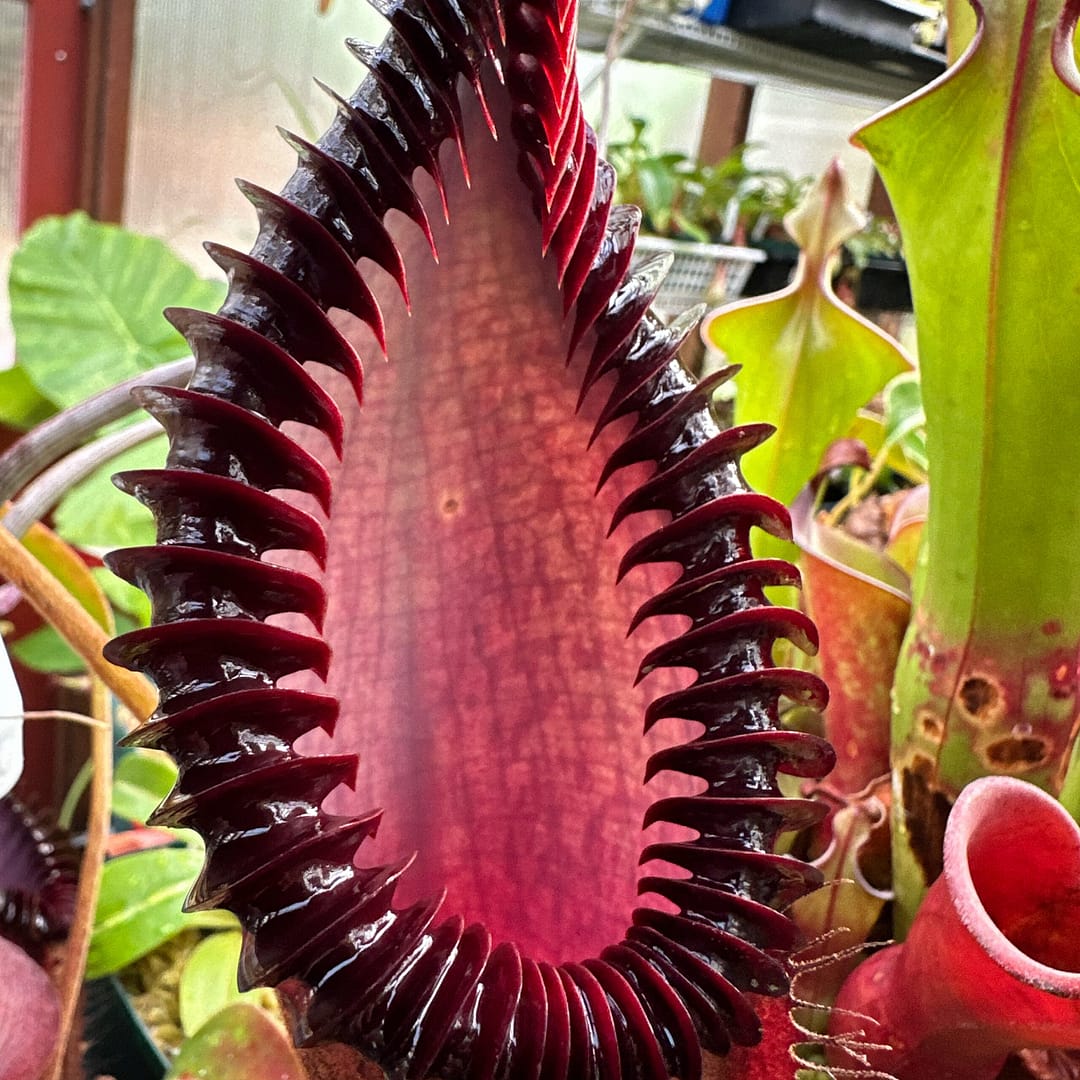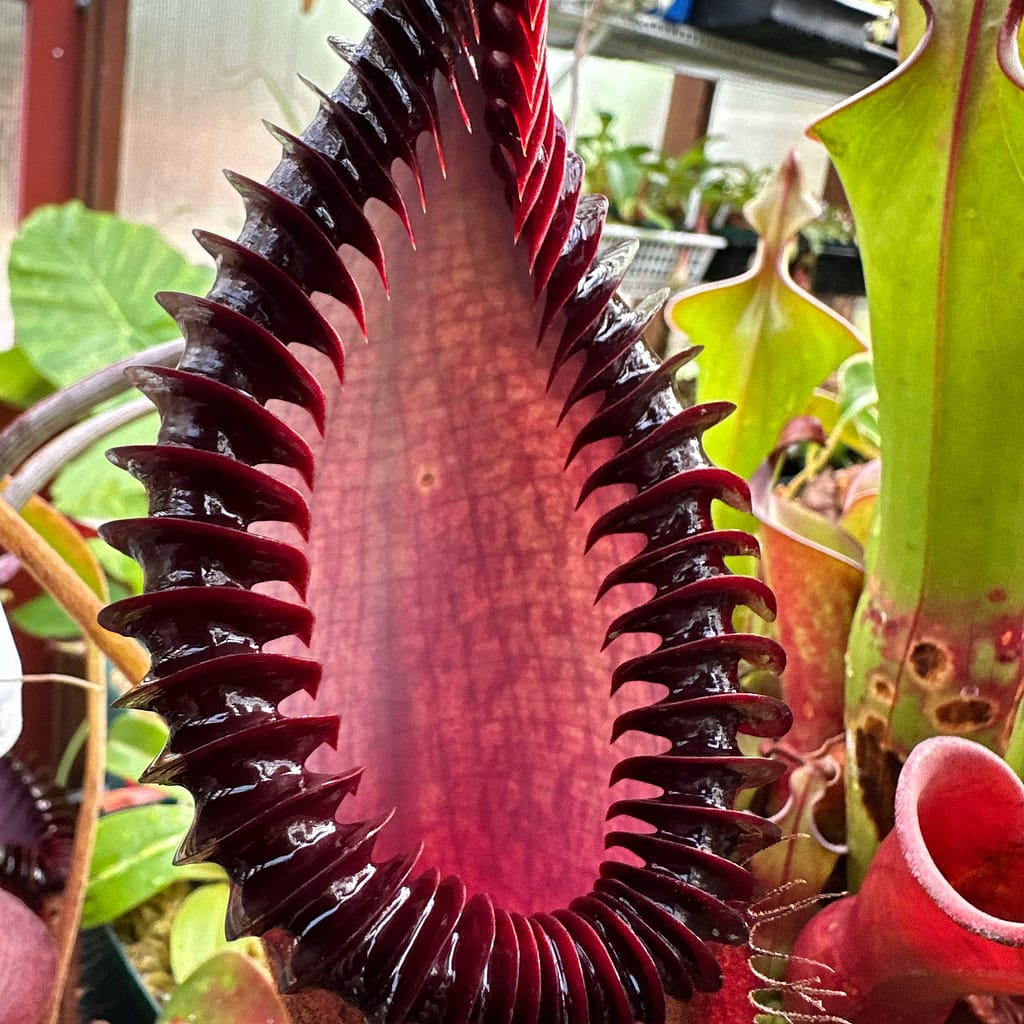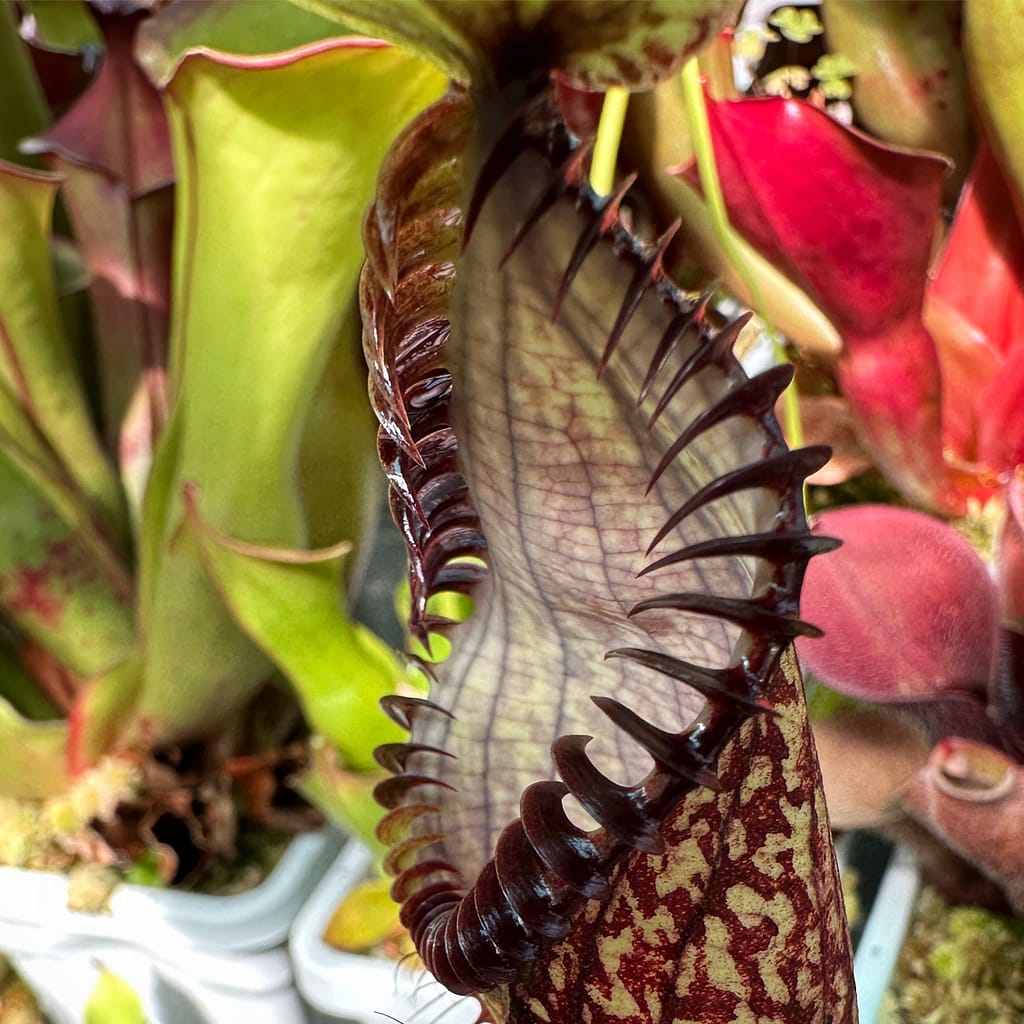
Exploration of Toothy Nepenthes
Among the diverse species within the Nepenthes genus, some stand out for their toothy peristomes. These specific including edwardsiana and hamata, are amongst the most iconic species in the genus. In this blog post, we will explore the toothed species of Nepenthes and delve into the evolutionary reasons behind the development of teeth on their peristomes.
Before we delve into the toothy mystery, let’s briefly understand the anatomy of Nepenthes. The pitcher plant’s characteristic structure consists of a modified leaf that forms a pitcher-shaped trap. The peristome, the uppermost rim of the pitcher, plays a crucial role in luring, capturing, and digesting prey. While many Nepenthes species exhibit smooth peristomes, others have evolved to feature tooth-like structures along the rim, leading to questions about the purpose and benefits of this adaptation. Here are some of the interesting theories on what these teeth could be for:


A Protective Mechanism:
One of the primary theories behind the evolution of teeth on Nepenthes peristomes revolves around protection. In their natural habitats, these plants face threats from various sources, including herbivorous insects, foraging animals, and even competing plants. The toothy peristomes act as a deterrent, making it more difficult for potential predators or competitors to access the pitcher’s interior.
Additionally, the teeth may serve as a barrier against rainwater overflow. In their native environments, heavy rainfall is common, and the toothed peristome may help channel water away from the pitcher, preventing dilution of the digestive fluids within.
Enhanced Prey Capture:
While the smooth peristomes of many Nepenthes species already possess slippery surfaces to trap prey, the addition of teeth could enhance the efficiency of capturing and retaining insects. The teeth may provide additional gripping points, preventing potential prey from escaping and increasing the success rate of the plant’s carnivorous strategy.
Adaptations to Specific Environments:
Different Nepenthes species inhabit diverse ecosystems, ranging from tropical rainforests to highland regions. The evolution of toothy peristomes may be a species-specific adaptation to the unique challenges posed by their respective environments. For instance, toothed peristomes could be more advantageous in areas with higher competition for resources or where predatory pressure is more intense.
A Protective Mechanism:
The toothy species of Nepenthes present an intriguing case of evolutionary adaptation within the plant kingdom. While the exact reasons for the development of teeth on the peristomes remain a subject of ongoing research, it is clear that these structures serve a multifaceted purpose, offering protection, enhancing prey capture, and potentially aiding in the plant’s survival in specific ecological niches. As scientists continue to unravel the mysteries of Nepenthes evolution, these captivating plants remind us of the incredible diversity and ingenuity found in the natural world.






